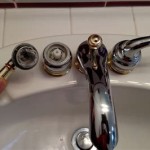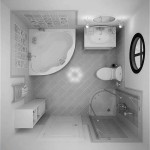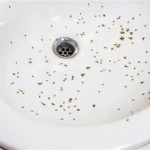What Causes Pink Mold In Bathroom Sinks
Understanding the essential aspects of what causes pink mold in bathroom sinks is crucial for maintaining a clean and healthy bathroom environment. This article will delve into the key factors that contribute to the growth of this unsightly and potentially harmful mold, empowering you with the knowledge to prevent and eliminate it effectively.
Pink mold, scientifically known as Serratia marcescens, is a type of bacteria that thrives in moist and warm environments. It is commonly found in bathroom sinks, showers, and other areas where water accumulates. The presence of pink mold can be not only unsightly but also a potential health hazard, as it can cause respiratory problems, skin infections, and other health issues.
1. Moisture and Humidity
Excessive moisture and humidity provide an ideal breeding ground for pink mold. Poor ventilation in bathrooms, caused by inadequate exhaust fans or closed windows, can trap moisture and create a humid environment that promotes mold growth. Additionally, leaky faucets, showerheads, or pipes can contribute to the problem by providing a constant source of moisture.
It's important to ensure proper ventilation by opening windows or using exhaust fans during and after showers or baths. Regular cleaning and drying of bathroom surfaces, including sinks, showers, and floors, can also help reduce moisture levels.
2. Soap and Organic Matter
Soap scum, body oils, and other organic matter that accumulate in bathroom sinks can provide nutrients for pink mold to thrive. These substances create a biofilm, a protective layer that allows mold to adhere to surfaces and resist cleaning efforts.
Regular cleaning with a bathroom cleaner or bleach solution can help remove soap scum and organic matter, preventing mold growth. Using a squeegee to remove excess water from sink surfaces after use can also help reduce the accumulation of these substances.
3. Lack of sunlight
Pink mold prefers dark, moist environments. Bathrooms often have limited natural light, which can create the ideal conditions for mold growth. Artificial light may not provide enough ultraviolet (UV) radiation to kill mold spores.
If possible, try to incorporate natural light into your bathroom by keeping windows uncovered. Artificial lighting with UV-emitting bulbs can also help suppress mold growth.
In conclusion, understanding the essential aspects of what causes pink mold in bathroom sinks is crucial for maintaining a clean and healthy bathroom environment. By addressing moisture and humidity levels, removing soap scum and organic matter, and ensuring adequate lighting, you can effectively prevent and eliminate pink mold, creating a safe and sanitary space for your daily routine.

Where Do You Get Those Pink Stains In Your Bathroom

What Causes Pink Mold In Bathroom Showers Forbes Home

Pink Mold In Shower Dangers Causes Removal Guide

What Are The Pink Stains In My Shower Sink And Toilet

Pink Mold In Your Bathroom How To Get Rid Of It Cw Service Pros
How To Get Rid Of Pink Mold

Pink Mold In Shower Dangers Causes Removal Guide

What Is The Pink Slime In My Bathroom Simplelab Tap Score

What Causes Pink Mold In Bathroom Sink Drain

What Causes Pink Mold In Bathroom Sinks Tips Facts Faq House Grail







